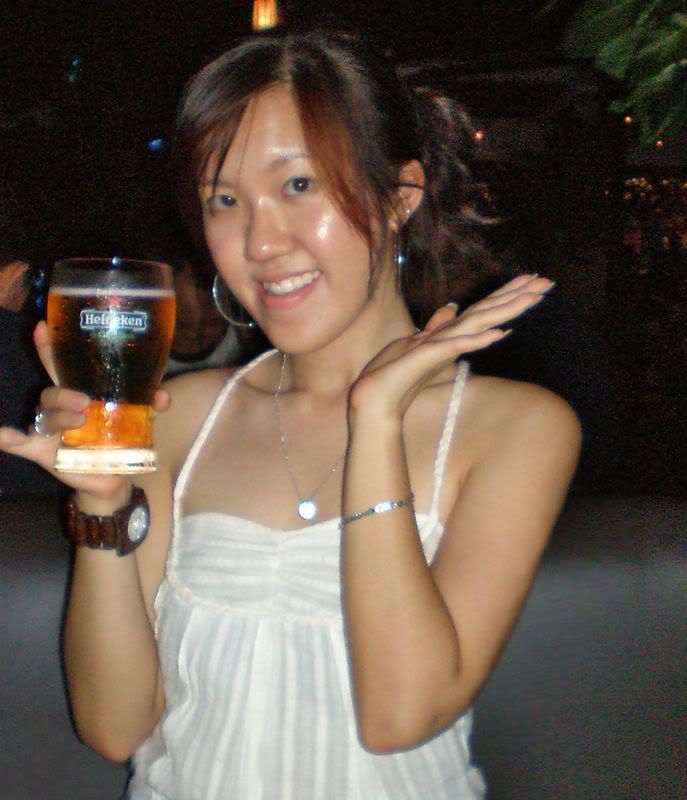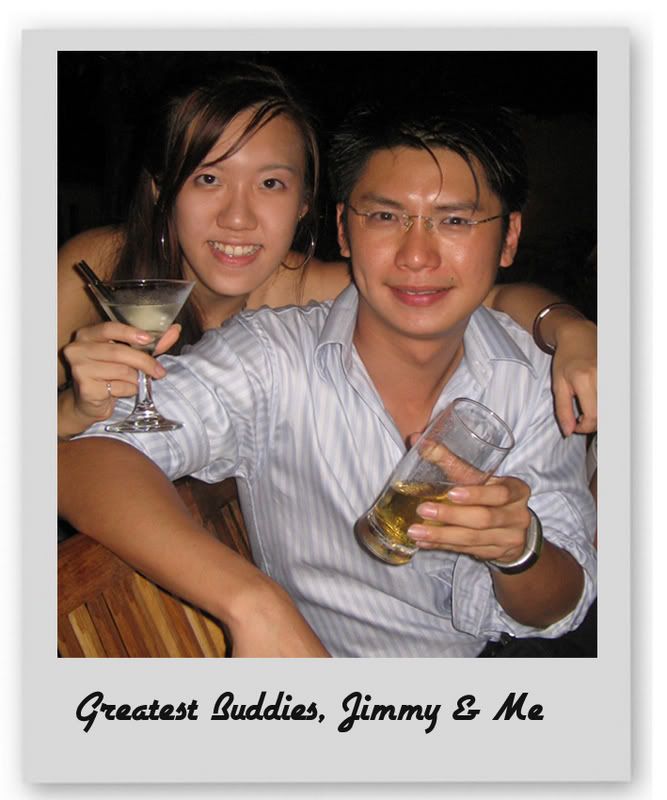All you need about Wine (I) - History & Basic

The history of wine is a cloudy one, at least before 6000 B.C. In ancient times, there was no such thing as good drinking water. And since people wanted something to drink with their meals, wine was a wonderful alternative. Markings on stone tablets and tomb walls show evidence that the Mesopotamians had some idea of how to make wine from grapes. The wine was probably very crude compared to what we drink today, but it was better than the water available for drinking.The Egyptians refined the process of winemaking, somewhat, and produced very sweet red and white dessert wines.
As the centuries passed, and the Roman Empire started to take its hold on the Mediterranean, the art of winemaking spread north. The drinking of wine was becoming more refined and it had similar effects on its drinkers. Because wine was so much more readily available, there was enough for everyone, not just the upper class. But those without money for bar drinking still managed to imbibe, by combining vinegar and water (not much different from a really cheap wine of today).The Romans preferred their wine sweet, not dry. They experimented with different ingredients, adding them for some pretty strange flavors – for wine anyway. Some examples of these additives were garlic, onion (typically Italian), and fermented fish sauce(?). There was a finer side to their additions, too, like Absinthe (very high in alcohol), rose petals, mint and pepper. Pure wine was just not accepted in ancient Rome. Aren’t you glad you didn’t live back then?
As time moved on, the consumption of wine moved right along with it. Drinking water throughout the Dark Ages was still not very good, so wine was still the preferred alternative to have with meals. One of the things that kept the wine industry alive was the spread of Christian monasteries throughout most of Europe. The monks found it relaxing to grow and groom vineyards in their monasteries. And it was a great source of free wine for their religious ceremonies.As the art of winemaking progressed, a movement started towards stronger, heavier wines that weren’t so sweet. The French Bordeaux region was thriving, exporting wines around Europe. After England lost control of that area in the 14th century, they had to import their wines from Portugal and Germany. As good drinking water became available in London, People wanted wine as a civilized social drink, now that they didn’t have to drink it. The availability of good drinking water pushed the wine industry to its next phase.
The wine industry is challenged in the 17th and 18th centuries. Improved production techniques created more palatable wines. The wine industry was re-emerging.In the 18th century, Bordeaux wines became the envy of winemakers everywhere, as they still are today. Superior-quality wines became the norm.The wine industry joins the progress of the 19th century. Sherry at that time was found to be a lot more sophisticated, and a lot less associated with drunkenness. Meanwhile, back in France, a French widow named Nicole-Barbe Clicquot-Ponsardin, discovered a simple method of removing sediment from Champagne, and adding in its place, wine, sugar and brandy. She also developed an assembly line, so it could be mass-produced.
The industrial age carries the wine industry along.As technological procedures advanced, the winemaking industry developed better methods for production, which created better and more varied types of wines. New storage techniques like refrigeration created a whole new process. Fermentation could be more controlled by varying temperatures at critical times in the process. Again, the results – better wines.Machines were introduced to help pick the grapes. Harvesting became easier and faster. They could even harvest at night. This was a very helpful development, because the temperature of grapes when they’re picked is a very significant factor in the winemaking procedure.
As technology advanced, winemakers found they could be in total control of the process, from harvesting to bottling. The winemaking industry leads to an accessory industryWith wine bottles, there was always the search for the perfect way to open them. Corks aren’t easy to get out of the bottle, so Carl Wienke’s invention of the corkscrew way back in 1882, was indeed welcome. The latest development in cork screws is the rabbit corkscrew, complete with foil cutter and automatic cork release.
So much on the history.... Let's moved on to some basic knowledge about wine.
So what are the varieties of wine around? We shall talked about Varietals. Varietals are wines that are named after their grape variety rather than by the region where the grapes are grown. They are generally non-European wines, it simply refers to the grape variety used to make the wine. In Europe, the finest wines are usually named after the region (the other is appellation) in which the grapes are grown; examples include Bordeaux, Chianti, Piesporter, Champagne, etc. In most of the rest of the world (including Australia, New Zealand, South Africa, South America and the United States) the finest wines are usually labeled with the name of the grape variety that the wine is made from (i.e.: Cabernet, Chardonnay, etc.).
The types of grapes used to make a wine are probably the single most important factor in the taste of the wine. However, the flavors of a wine are also affected by alot of factors such as the age of the vines, the types of soils the vines are grown in, exposure to sunlight, climates and microclimates, how the grapes are handled and fermented, types of yeast used, whether the wine is aged in wood, etc. Therefore, the same grape types can be grown in France, Australia, California and Chile, but various factors result in wines which taste different! Half the fun of experiencing wine is the incredible array of flavors available!
Many of the world's finest wines are a blend of varietals: almost all Bordeaux red wines contain Cabernet Sauvignon, Merlot and Cabernet Franc; almost all Champagnes contain Pinot Noir and Chardonnay. A wine which is a blend of Cabernet and Merlot, for example, is often more complex than a wine which is 100% Cabernet Sauvignon. Exploring varietal characteristics makes for a richer wine experience.
Let me bring you to some common types that we are likely to encounter in our daily experience.
1. Bubbly
- Champagne
- Sparkling
Throughout the world there are many bubbly wines made after the style of Champagne, but only those made in that region in the north of France, according to the painstaking Méthode Champenoise, can rightfully be called Champagne. All others should be labeled as Sparkling Wine, and if they follow the same method it is called the Classic Method or a vernacular equivalent (i.e. Méthode Traditionnelle). Very inexpensive bubblies are mass-produced in departures from this technique.
French Champagne is without question the finest sparkling wine made in the world. Champagne is the name of the wine region located about 90 miles northeast of Paris. Champagne can contain up to three different grapes: Chardonnay, and the red grapes Pinot Noir and Pinot Meunier. Vintage Champagnes are only produced in the very best years; they are always more expensive than non-vintage Champagnes, but they are not always better tasting.
Most Champagnes are the supreme expression of the blender's art, assembled from numerous vintages, multiple grape types and various selected vineyards within the Champagne district, then carefully hand made and fermented in the bottle. By making these blends, the winemakers are able to create a consistent ''house'' style and, indeed, each Champagne producer has its own distinct style.
Finally, there are several important terms you will encounter on a Champagne label that tell you much about the contents. From dry to sweet, Champagnes are labeled Brut Absolut, Brut, Extra-Dry, Sec, Demi-Sec and Doux. Blanc de. Blanc bottlings are made entirely from Chardonnay grapes and tend to be lighter and more delicate in style. Blanc de Noirs are made from red grapes and tend to be fuller bodied and richer tasting; Rose Champagnes are dark pink in color and frequently intensely flavored. Champagnes combine the complexities of fine grapes grown in some of the best vineyards in France with the intricate subtleties of yeast and sometimes even oak elements plus the experience of tongue-tickling delight from pinpoint bubbles and effervescence to create one of the most sensual taste experiences in the world!
Following the model of Champagne, sparkling wines are made throughout the world. The best of them use the same method, with a second fermentation occurring in the bottle. Good sparklers come from other parts of France, Italy, Spain, Australia and California. The wines are crisp, lively, and full of apple and yeasty bread scents.
2. Red Wines
- Barbera
- Cabernet Sauvignon
- Cabernet/Merlot Blend
- Chianti
- Italian Red
- Merlot
- Nebbiolo
- Other Red Wine
- Petite Sirah
- Pinot Noir
- Red Bordeaux
- Red Burgundy
- Sangiovese
- Syrah/Shiraz
- Tempranillo
There are about 40 important red grape varietals grown in the world today however only the few more major ones would be named here. Generally speaking, the list is name as such when u moved down the list, the grapes will go from light to full-bodied in texture; low to high in tannin level; lighter to deeper in color (which generally corresponds to perceived acidity); younger to older in ageability. In truth the redness of a wine depends on contact with the skin of the grapes: separate the grape from its skin soon enough after picking and you can make a very white red. For example, most wines made in Champagne are white wines made with a significant proportion of red grapes. European wines will usually be identified by their appellation; elsewhere wines will be identified by varietal.
Barbera:
This Italian varietal is planted primarily in Piedmon ( and some other parts of Italy), but has spread widely, primarily to California. Probably one of the most underrated grapes in the world, Barbera can be used to make an incredible range of styles, ranging from young and spritzy to powerful and intense wines that need extended cellaring. It is a deep ruby color, full bodied, with low levels of tannins balanced by higher levels of acidity. Barbera is charactarized by bright berrylike flavors and is one of the best alternatives to overcropped and overpriced Merlot.’
Cabernet Sauvignon:
The grape responsible for the wines of Bordeaux's Medoc region, arguably some of the finest reds in the world. One theory that always holds is the blending of Cabernet grapes with Merlot and Cabernet Franc or Petite Verdot adds character and complexity and offsets its great tannin (such is the case with wines of Bordeaux). The classic Cabernet flavor is one of deep, dark fruits, primarily blackcurrant (cassis) and the best are medium- to full-bodied, intense and firm. Cabernets are almost always aged in oak for over a year, and should age several more years in the bottle. The great Cabernets of the Medoc region in France age for 15 years and more.
Cabernet/Merlot Blend:
Cabernet/Merlot blend refers to those wines which are often referred to as reserve bottlings, as special selections, as proprietary names (such as Opus or Insignia), or as ''Meritage'' blends. Wineries the world over are following the Bordeaux-established style of blending Cabernet Sauvignon with Merlot (and sometimes a little Cabernet Franc, Malbec and Petit Verdot) to create a more complex wine. Cabernet/Merlot blends are frequently the producer's finest bottlings.
Chianti:
Around the medieval cities of Florence and Sienna in Tuscany is the region of Chianti. It is broken up into seven subdivisions. Only Chianti Classico & , Chianti Ruffina are commonly seen on labels. The Medici Grand Duke Cosimo III first defined the region in 1716; in the second half of the 19th century, Baron Ricasoli fixed the recipe for modern Chianti, which is a blended wine as are most French Bordeaux. The Chianti wines labeled ''Riserva'' must be aged a minimum of three years and are often fine, age-worthy wines that rank among the best red wines of Italy. Chianti, of course, is a perfect red wine to accompany most Italian cuisine; the best often feature hints of floral complexity in the bouquet, firmly structured medium-bodied flavors and balancing acidity.
Italian Red:
The red wines of Italy are hugely varied. Italian wines tend to have higher acidity and taste tarter. They also often have a bitter component to the finish. These qualities make Italian wines some of the best wines to drink with a meal, but it also can mean that they aren't as fun for just sipping.
Some of the outstanding Italian Reds are: Barolo, Barbaresco, and Barbera from the Piedmont; Merlot from the Fruili; Valpolicella and Amarone from the Veneto; Chianti, Brunello, and Vino Nobile di Montepuliciano, as well as various ''supertuscans'' from Tuscany; and Taurasi and Aglianco del Vulture from Southern Italy.
Merlot:
Merlot wines have soared in popularity in the last decade, as they offer something for everyone: from light and simple wines to full-bodied and complex bottlings. Merlots are often less tannic and more lush than Cabernets, though still full-bodied, deep in color and fairly high in alcohol with flavors of cherry, plum and chocolate.
Nebbiolo:
This varietal is named for the dense fogs prevelant in the vineyards of Piedmont, Italy where it is almost exclusively grown. Nebbiolo is responsible for some the the worlds finest and longest-lived wines. Nebbiolo generally makes powerful and intense wines, although generally with medium body and color. These wines are high in tannins and acids, they often need several years of bottle age before they are ready to drink. They often have aromas and flavors of of raspberries, plums, earth, roses, and tar.
Other Red Wine:
Aside from the famous varieties that everyone has heard of, there are tons of very fine, but less well-known grapes include Rhone varieties like Grenache and Mourvedre; Cabernet Franc and Malbec from the France and California; Dolcetto and Negro Amaro from Italy; Pinotage from South Africa; and even hybrids like Marichal Foch from Oregon. This is the category of wines for real exploration, real discovery, and often real value.
Petite Sirah:
Mainly grown in California, this grape is either related to the Syrah grape or to the nearly-extinct Durif variety once grown in France's Rhone region. These are big, deep-colored, full-bodied wines that age well, are high in tannin and have a peppery flavor. Although they are a fine stand-alone varietal, Petite Sirah grapes are often blended with Zinfandel to add complexity.
Pinot Noir:
To grape growers and winemakers, Pinot Noir presents both the ultimate challenge and the ultimate reward. At their best, Pinot Noir grapes produce wines that are rich and complex, tasting of black cherries, red berries, earth and spice, with an aroma that's been likened to everything from herbs and cola to bacon and roses. Pinots can be high alcohol, light in color and low in tannin, though oak aging can increase the tannin levels. One of the most exciting developments in the world of wine is the recent advances Oregon and California winemakers have made in producing first rate Pinot Noirs, respectable rivals to the legendary reds of French Burgundy. Most other Pinot Noirs produced around the world are pale imitations of Burgundy, usually lacking depth, elegance, richness and texture. You may wonder why anybody would bother with such a troublesome, fussy, hard-to-grow, enigmatic grape, but at their best there is no wine in the world that can offer more seductive, velvety, complex flavors than a fine Pinot Noir.
Red Bordeaux:
Bordeaux is a region in France that produces some of the world's finest and most famous red, white and dessert wines. The greatest red wines of Bordeaux come from the Medoc, Graves, Saint-Emilion and Pomerol; dry white wines mostly from Graves; and dessert wines from Sauternes, Barsac and Sainte-Croix-du- Mont. The red wines are almost always blends which include Cabernet Sauvignon, Merlot and Cabernet Franc, with sometimes small amounts of Malbec and Petit Verdot. The white and dessert wines consist of mostly Sauvignon Blanc and Semillon. Many of the world's most spectacular and sought-after wines come from this region, including Chateaux Lafite-Rothschild, Mouton-Rothschild, Petrus, Cheval Blanc, Haut-Brion, Latour, d'Yquem, etc.
Red Burgundy:
Burgundy red wines are produced in an area of France stretching from Dijon south to Beaujolais. The northern section of Burgundy is called the Cote d'Or (hills of gold) and generally, the farther north the vineyard, the richer flavored the wine. Here the Pinot Noir grape produces deliciously seductive wines combining grace and power with supple velvet textures and complex flavors. Many of the finest vineyards are located halfway up the hillsides, midway between overly fertile valley soils and the too steep and rocky upper slopes. These meager soils are seasoned with chalk and limestone and are not too rich--perfect conditions for vines to produce some of the greatest wines in the world.
The southernmost red Burgundy region is Beaujolais. Generally, these wines are fashioned to be enjoyed in their youth, slightly chilled to bring out their berry-like character. Beaujolais should be fruity but dry, with an underlying acidity that helps complement an amazing array of foods.
Sangiovese :
An important grape in some of the greatest red wines of Italy, this hard-working Tuscan native is coming into its own as a stand-alone varietal. Wines from the Sangiovese can be medium- to full-bodied and medium to high in tannin. Typically they are characterized by cherry and spice flavors, sometimes with hints of violet, and sometimes even slightly nutty. Sangiovese wines are constantly evolving, depending on where the grapes were grown and what, if any, additional grapes are blended with them.
Syrah/Shiraz :
Syrah is a rich, full-bodied, complex, spicy, long-lived wine that thrives in the Rhone region of France and produces such famous wines as Hermitage and Cote-Rotie. It is the most popular red wine of Australia (where it is called Shiraz and is often blended with Cabernet Sauvignon) and is becoming increasingly popular in California (where it is replacing another Rhone grape called Petite Sirah in America). Syrah can be successfully blended with many other wine grapes (often to give them more backbone and structure); it also can be made in a variety of styles ranging from soft and medium-bodied with some berry characteristics to deeply colored, powerful monsters tasting of roasted peppers, black cherry and smoke. Like California Zinfandels, American Syrahs can be full-bodied wines but often show more spice elements and less berry-like fruit than Zins.
Tempranillo:
This important red variety, native to Spain, is primarily cultivated in Rioja, Ribera del Duero and parts of Penendes. Often described as Spain's answer to Cabernet Sauvignon, this variety is capable of producing deeply colored, richly flavored and ageworthy wines with flavors of dark cherry, spice, tobacco, and strawberry. Fairly low in acid and alcohal levels, Tempranillo is often blended with other grape varieties such as Garnacha (Grenache) Monastrell, Cabernet Sauvignon, and Merlot.
Chardonnay
Chenin Blanc
Gewurztraminer
Italian White
Pinot Gris/Grigio
Riesling
Sauvignon/Fume Blanc
Semillon
Viognier
Viognier(JA)
White Bordeaux
There are 50 major white grapes grown in the world today, 24 in California alone. The three most important grapes are listed here, ranked by texture from lightest to most full-bodied. European wines will usually be identified by their appellation; elsewhere wines will be identified by varietal.
Chardonnay:
Chardonnay is to white wine what Cabernet is to reds. It is used to produce France's magnificent white Burgundies and is the main grape in Champagne. But Chardonnay also has a populist bent - in the last decade or so, it has become the world's most often-purchased dry white wine. When Chardonnay wines are made with care, they are bold, rich and complex and taste of ripe figs and peach, honey and butter, hazelnuts and spice. The best are medium-bodied, medium dry and high in acidity. Chardonnays, more than any other white wine, love to be aged in oak.
Chenin Blanc :
Chenin Blanc is perhaps the Beaujolais of white grapes-the best examples (such as French Vouvray) have a beguiling fresh fruit character with hints of pears, peaches and fresh grapes that is utterly charming. Chenin Blanc can be made in a full range of styles from dry and crisp to semi-sweet and fruity to full blown late-harvest dessert wines (such as Coteaux du Layon and Quarts du Chaume from the Loire) which can rival Sauternes in honeyed complexity of flavors and ageability. You can detect honey, straw and even exotic scents like oil of Bergamot (think Earl Grey tea) in the best examples. Chenin Blanc can also make charming sparkling wines, especially from Anjou and California. Chenin Blancs will even stand up to modest oak ageing. It is still a workhorse grape in California, and is frequently blended into Chardonnays and other wines to add fruit and acidity.
Gewurztraminer:
Gewürztraminer is a distinctive wine with an intense spicy bouquet. It can be made in a range of styles from totally dry and crisp (most Alsatian bottlings) to slightly sweet and flabby (too many California bottlings) to luscious, honeyed sweet dessert wines (sort of like a late harvest Riesling but with complex spicy components). Besides spice elements, Gewurztraminer can offer suggestions of various fruits, flowers and even nuts! No wine ends up tasting more like its initial grape flavors when freshly picked; thus few winemakers barrel-age Gewurztraminer or do anything in the cellar which would interfere with its delightful varietal character. The dry versions are refreshing complements to a wide variety of foods from pork and white meat dishes to onion quiche and various Asian cuisines.
Italian White:
The white wines of Italy have suffered from identity problems. This is changing, and Italian whites are taking their place among the world's best. Italians are growing international varieties like Chardonnay and Pinot Grigio, as well as indigenous varieties like Vernaccia, Arneis, and Traminer (closely related to Gewurztraminer). Generally Italian whites are light, crisp, and fully dry; but some winemakers are beginning to make fuller-bodied wines as well.
Pinot Gris/Grigio :
Pinot Gris is a darkly colored white wine grape that evolved from the Pinot Noir. Originally a popular wine from Alsace (where it was once labeled Tokay) and northeastern Italy (where it is called Pinot Grigio), Pinot Gris has become one of the most successful wines grown in Oregon. Most versions are quite dry, but Pinot Gris wines can range from light and delicate to fairly full-bodied. Rarely barrel-aged, Pinot Gris wines tend to be dry and crisp, the perfect accompaniment to salmon and seafood. It can be rather subtle in both flavor and aroma, though the best examples are reminiscent of almonds, minerals and peaches.
Riesling :
Riesling grapes need cooler climates and they produce both refreshing light-bodied wines and full-bodied table wines to pair with the greatest cuisine. As with Chenin Blanc, Riesling has a very high natural acidity, which both balances the sugar (think of the way we have to sweeten lemonade) in sweeter wines and acts as a preservative for long ageing. Rieslings are floral and fruity, and can be delicate, subtle, and low in alcohol, making for a very nice summer wine. But even sweet, low-alcohol wines from the Mosel in Germany balance the sugar with a steely, teeth-cleaning acidity. And though you might think of Rieslings as necessarily sweet, there are many dry Rieslings, the best being from Alsace. These show best with several years of bottle age--though they are certainly fun to drink young!--and pair magnificently with pork, foie gras, and other rich foods.
Sauvignon/Fume Blanc :
Crisp, high in acidity and light- to medium-bodied, Sauvignon Blanc is recognizable for its grassy, herbaceous flavor and aroma. When grown in warmer climates the flavors are more fruity, melon-like. The grape is important in California, New Zealand and Northeastern Italy, but it really shines in France's Loire Valley and Bordeaux regions. There it is used prodigiously as a blending grape and is responsible for the stand-alone varietals Sancerre and Pouilly-Fume. Though not as rich and complex as Chardonnay, this is a versatile grape, one that grows well in a number of places, responds well to oak or a lack thereof, and can be drunk young or aged several years. As well, it can make for some fabulous late-harvest offerings.
Semillon :
Semillon is one of the unheralded whites in the world of wine. It plays a key role in white Bordeaux and in the dessert wine Sauternes, and it makes a great value white from Washington State. Semillon is also the grape responsible for ''Hunter Riesling'' or ''Honey Hunters,'' one of the most interesting of Australia's wines. For a low-acid wine, Semillon takes to bottle age surprisingly well, and it's often inexpensive enough to make laying some down for five years or so very easy. In Bordeaux, Semillon is used to fill out the leaner and higher acid Sauvignon Blanc, and the two complement each other very nicely. Semillon is often a brilliant gold wine with a soft, full, and sometimes even oily texture, and often shows a scent of figs. It can be made dry or sweet.
Viognier :
This noble white varietal, famous for its magnificent Rhone Valley wines such as Condrieu and Ardeche, has been steadily making a name for itself in America. Winery owners and growers on both coasts are planting more and more as the demand for it increases. Consumers are looking beyond Chardonnay and Sauvignon Blanc for interesting white wines that are also food friendly. Viognier has flavors all its own and texture that can easily match the most full-bodied chardonnay. Some are fermented in stainless steel tanks and have no wood treatment, which results in a precise, aromatic, crisp wine that shows off the peach and apricot flavors of the grape. Many California producers have also used wood barrels to ferment or age the wine, adding further complexities and complements to the fruits natural flavors. Notes of anise, tangerine and fig blend with spicy aromas. Some Viogniers can be feminine and some quite brawny. The region of origin is also an important factor to the varying styles, with warmer regions producing riper wines and cooler retaining more acidity and precision. True of almost all however, is that they are best when consumed fairly young.
White Bordeaux :
There's white wine in Bordeaux, too! Typically made from Semillon, Sauvignon Blanc, and bits of Muscadelle, white Bordeaux can be a fully dry table wine or, as in Sauternes, perhaps the greatest dessert wine on the planet.
4. Pink WinesRose
Perhaps best known in Provence and Tavel, rose is a great pink wine. Rarely super complex, and not to be aged, good roses are tart and fruity, and cut through the garlicky aioli so often accompanying fish and fish stews in the Mediterranean. Roses are also good choices for cold luncheons, picnics and buffets. They are made from red wine grapes, and during fermentation have minimal skin contact so they don't pick up too much color from the grape skins.
5. Dessert, Fortified & Fruit Wines
Fruit Wines
Other Dessert:
Port
Sherry
Vermouth
These are wines made with addition of spirits to raise the alcohol content. The greatest are Port from the Douro region of Portugal, and Sherry from a region of Andalusia in southern Spain. Since wines in other countries are labeled as port, true Portuguese is now labeled
Fruit Wines:
A “Fruit Wine” is generally any wine that is fermented from a fruit other than grapes. None of the fruit character comes from the addition of fruit flavors but is the natural product of fruit fermentation. There are many different types of fruit wines, but the some of the most popular include: Red Raspberry, Blackberry, Cherry, Cranberry and Blueberry. These wines are big and intense in their fruit character as it typically takes over ten pounds of fruit to produce one gallon of premium fruit wine. Fermentation techniques vary with the specific winemaker, but often the fermentation is under cold conditions to maximize the retention of fruit character. Well-made fruit wines are a delicate balance between the fruit’s natural acidity and residual sugar. If the finished wine is made too sweet, it tends to be cloying on the palette. If it is too dry, it tends to be sharp and astringent. Striking the proper balance is the objective in a carefully crafted fruit wine.
Well-made fruit wines come from the finest growing regions for that particular fruit. These include: Willamette Red Raspberries and Marion Blackberries from the Pacific Northwest, Montmorency Cherries from Michigan, Blueberries from New Jersey and Maine and Cranberries from New England. As in grape wine, optimal fruit quality translates into spectacular fruit wines.
“Fruit Wines” have a multitude of uses. They are often consumed slightly- chilled (55 degrees F) with a dessert course. For example, Blackberry and Red Raspberry wines are a great accompaniment with dense chocolate desserts as the wine cleanses the palette of the sweet chocolate. Blueberry and Cherry has a similar effect with Cheesecake. Fruit wines are also used in the sauté’ pan to make pan reductions. Veal with a Red Raspberry Wine Cream Sauce, Pan-Seared Duck Breast with Cherry Wine Reduction and Filet Mignon with a Blackberry Reduction are good examples. Fruit wines may as be used in various baking recipes. Further, they may be used in a number mixed of drink concoctions like a Cranberry Wine Cosmopolitan. Finally, a chilled splash of a Fruit Wine in a glass of sparkling wine makes a wonderful kir before a meal.
Port:
Port is a sweet fortified wine from the grapes growing on the deep valley walls sloping down to the Douro River in Portugal. Its name coming from Oporto, Port is made from up to about 40 grape varieties, most of which are red. After a brief fermentation to about 6% alcohol, the still fermenting grape must is poured off into larger containers holding spirit, which kills the yeast and stops fermentation. The young wine is then shipped from the vineyards to the Port houses in Oporto, where it stays in barrel for a year or two. At that time a "vintage" can be declared, and the Port bottled with a vintage designation. This Port virtually demands 15 or 20 years of bottle age. In order to have Port that is enjoyable at purchase or shortly after purchase, there are other "wood-aged" Ports, which have spend more time in cask. These can be young "Ruby" Ports, aged "Tawny" Ports (which will sometimes average up to 40 years in cask), and "Late Bottled Vintage" Ports. Port traditionally accompanies walnuts and stilton cheese.
Sherry :
Sherry is a fortified wine from the area around Jerez, Spain ("Sherry" being the anglicized corruption of the word "Jerez"). Made primarily from the Palomino grape, Sherry is another of the world's great expressions of chalky soil (along with Chablis, Burgundy, and some Loire wines). With non-vintage Champagne, Sherry is also one of the great expressions of the blender's art. In the Sherry Bodegas, fractional blending systems called Soleras, ensure a style of wine uniform from vintage to vintage. In the finest of these, space is left in the barrels of the solera for a special yeast called "flor" to develop and thrive. Sherries run from completely dry, light "finos" to nutty "amontillado" (remember "The Cask of Amontillado"?) to rich "oloroso." The latter two are often sweetened and sold as cream sherry or other proprietary brands. Interestingly, because of the fortification and the exposure to air-Sherry essentially being oxidized already!-an open bottle of Sherry will last almost indefinitely. Sherry is the perfect wine for tapas.
Vermouth :
Even though Vermouth is practically married to Gin, Vermouth is a fortified wine and not spirit. Because Vermouth is flavored with herbs, it is often not necessary to start out with fine wine. But some producers do use good quality wine as a base. It is made in as many different styles as there are producers.
So much about wine to be absorbed..Coming up next is All you need about Wine (II) - Selecting Wine...


























































0 Comments:
Post a Comment
<< Home